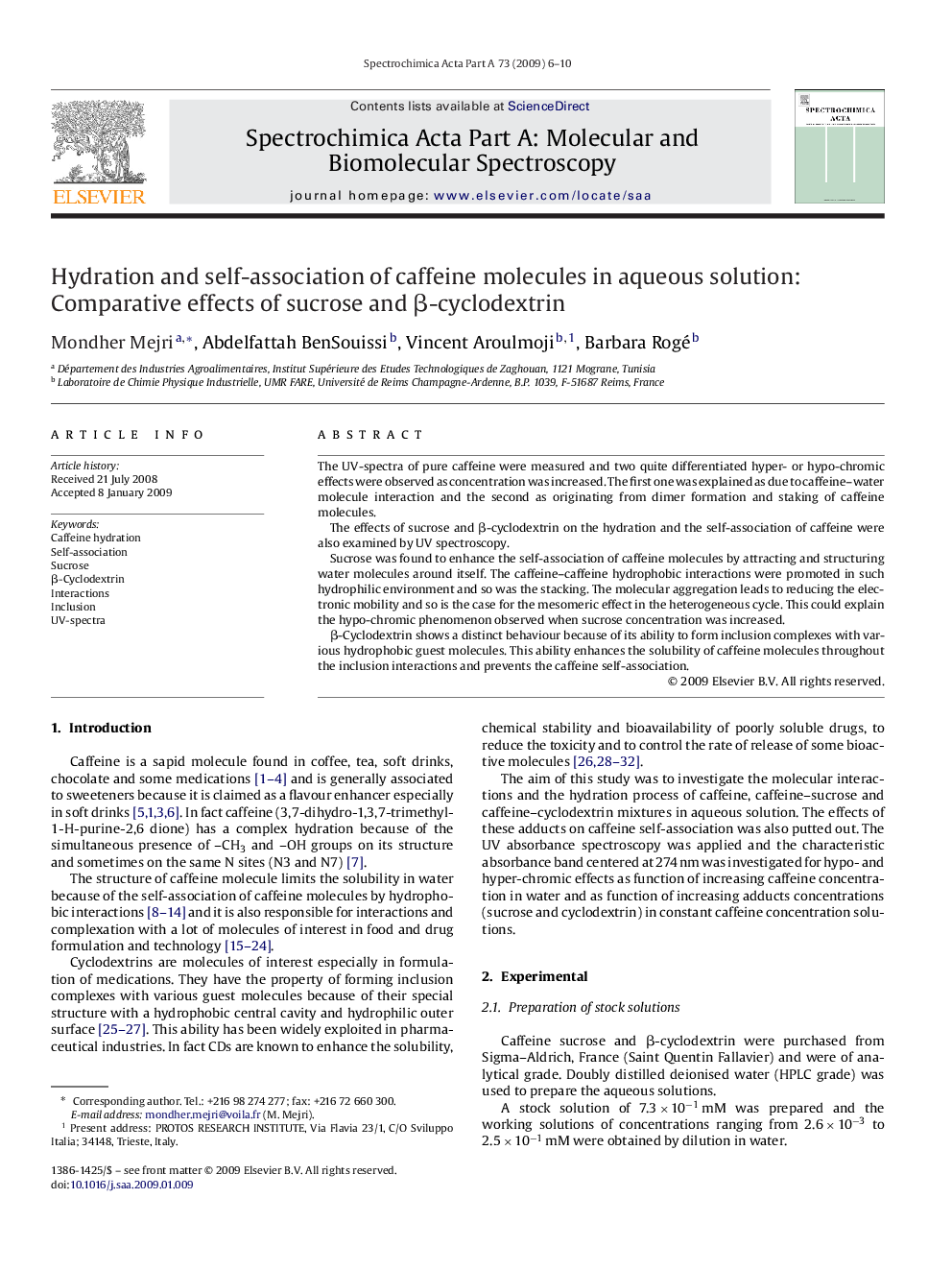| Article ID | Journal | Published Year | Pages | File Type |
|---|---|---|---|---|
| 1234516 | Spectrochimica Acta Part A: Molecular and Biomolecular Spectroscopy | 2009 | 5 Pages |
The UV-spectra of pure caffeine were measured and two quite differentiated hyper- or hypo-chromic effects were observed as concentration was increased. The first one was explained as due to caffeine–water molecule interaction and the second as originating from dimer formation and staking of caffeine molecules.The effects of sucrose and β-cyclodextrin on the hydration and the self-association of caffeine were also examined by UV spectroscopy.Sucrose was found to enhance the self-association of caffeine molecules by attracting and structuring water molecules around itself. The caffeine–caffeine hydrophobic interactions were promoted in such hydrophilic environment and so was the stacking. The molecular aggregation leads to reducing the electronic mobility and so is the case for the mesomeric effect in the heterogeneous cycle. This could explain the hypo-chromic phenomenon observed when sucrose concentration was increased.β-Cyclodextrin shows a distinct behaviour because of its ability to form inclusion complexes with various hydrophobic guest molecules. This ability enhances the solubility of caffeine molecules throughout the inclusion interactions and prevents the caffeine self-association.
